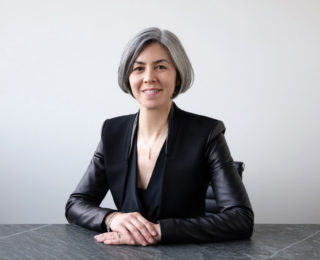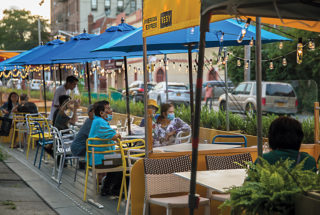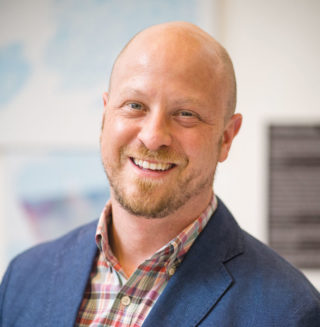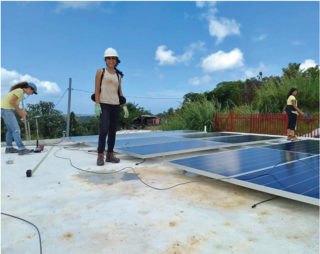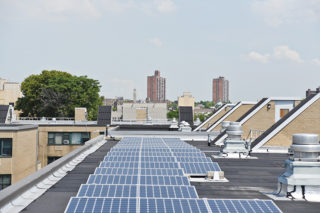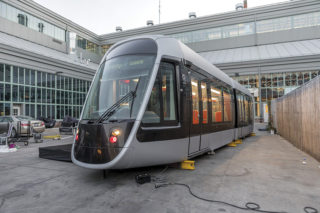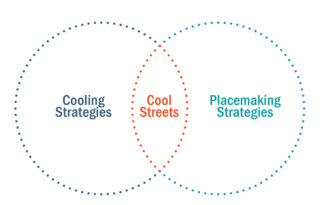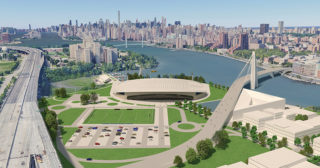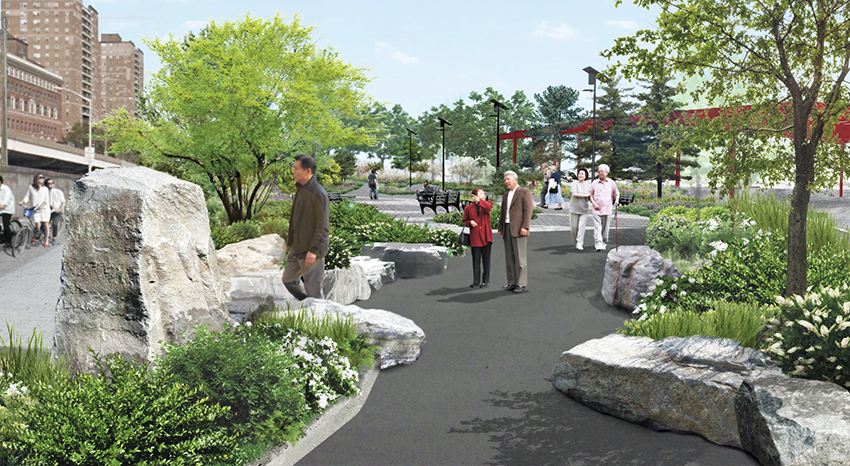
According to the New York City Parks Department, 79% of New Yorkers can walk to a park in less than 10 minutes. The Trust for Public Land has published numerous studies on the many economic and social benefits of public open spaces and parkland, citing the fact that parks draw in people, stimulating local businesses and encouraging healthy habits for residents. But the true impact of green space on the surrounding community is trickier to quantify. While being in proximity to a park is one thing, calculating the true equity of utilizing it is another. The city’s waterfront, much of it still underdeveloped, offers the most potential for creating new parks for those communities with a deficit of usable green space.
Neighborhood density and park size impact the likelihood of reaping benefits from green open space. Low-income minority groups often have the least access to public outdoor space, which has become all the more necessary as indoor activities are limited during the COVID-19 crisis. In fact, these very communities have been hardest hit by the pandemic. But revitalizing public space to make it green and accessible is often a multi-year endeavor that can stall or be derailed.
In the context of post-COVID economic disparity, one chief concern for any public open space project is securing funding that will survive project length. The conservancy model for financing the development of parks in New York City relies very heavily on philanthropy and special events—which normally take the form of indoor luncheons or dinners, April through May. This is why, when the city went on “PAUSE” in March and the Parks Department faced a steep fall in revenue, Heather Lubov, executive director of the City Parks Foundation, started reaching out to her network to establish the NYC Green Relief & Recovery Fund. “Parks are the only public assets that have remained entirely open during the pandemic,” says Lubov, “but without the money, it’s going to be hard to stay open.”

While the recovery fund is a grant program primarily focused on emergency relief, at least 10% of its holdings are set to go towards discussing alternatives for securing financial resources free from politics and philanthropy. Post PAUSE, says Lubov, “People know the value and importance of parks now more than ever, but this particular model is not sustainable if we want to change the dynamic of how our parks are cared for long term.” When the majority of funding comes straight through the city through tax revenue and private conservancies, every public open space and community organization is competing for the same cash. If public officials and fund administrators are ever going to work together, more resources will need to go towards thinking proactively about ways to gain financial backing that doesn’t pit communities against one another. To be truly equitable, the old model may need to be tossed out altogether.
While current circumstances call for a complete rethink-ing of the way architectural firms work, many design professionals are considering how to proceed, with an underlying fear that procuring funding will only become more difficult. Mathews Nielsen Landscape Architects (MNLA) has been reflecting on the financial challenges ahead for themselves and their clients, especially for not-for-profits. The firm is exploring working with grant writers to help supplement these clients’ funding. Acquiring the money to realize multifaceted, million-dollar projects often relies on demonstrable impact. But, as MNLA Principal Molly Bourne, RLA, ASLA, explains, designers “don’t always live in the communities we work in, and rarely have an empirical understanding of our work’s true impact.” The most important factor is the voice of the community in determining impact—before, during, and after a project. “It’s our position that we are there to help them realize their ideas,” she adds.
MNLA is currently engaged in some of the city’s seminal resiliency-focused urban design projects, which were launched in the aftermath of Superstorm Sandy. One of these is Pier 42, aimed at transforming an eight-acre parcel of East River waterfront on Manhattan’s Lower East Side into a multiuse expanse featuring grassy lounging areas, recreational facilities, kids’ play areas, and a landscape of native and adapted species that can sustain flooding. Looking back at previous work that was heavily dependent on collaboration with local community organizations and non-profits in the South Bronx, Bourne and Principal Signe Nielsen, Hon. AIANY, RLA, FASLA, have learned some lessons in endurance. Decades of experience have taught them that longterm success at the shoreline or any public realm comes down to unwavering commitment, fortitude, and the belief that incremental change is more enduring than rapid transformation. “We need to be in a proactive cycle if we’re ever going to address the broader issues at play,” says Bourne.
Nielsen and Bourne point to the firm’s Hunts Point Landing project in the South Bronx as a successful example of an early and ongoing partnership with local leaders. Working closely with city agencies and community-based project partners like the POINT Community Development Corporation in Hunts Point and Sustainable South Bronx, MNLA led a team to define the route and character of the South Bronx Greenway within the Bronx neighborhoods of Hunts Point and Port Morris. The project’s goal was to offer quality-of-life improvements, such as more public open space, traffic-mitigating measures that make it impossible for large tractor-trailer trucks to travel down residential streets, and room for alternative commuting. It also seeks to encourage both residents and workers to make the space community-oriented by using it together. As Majora Carter, founder of the Sustainable South Bronx, has said, “Community is not just a place you go to or even a group of people—it is an activity.”

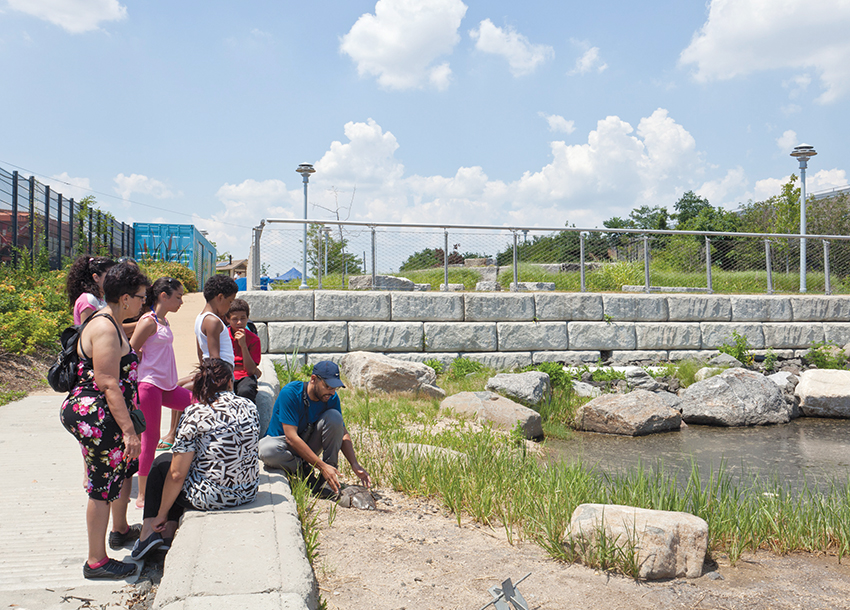
What used to be an illegal dumping ground now sits as the gateway to a revitalized Bronx River, a waterfront oasis created by listening to the needs of residents and local business owners who wanted to focus on community engagement as a means of revitalization. But the word “success” is where Nielsen starts to wonder how the results of their efforts will ultimately be quantified or used as reference. “Each time I visit that area, I see butterflies and I notice that the hawks are coming back,” she says. “And I’ve learned that the annual Fish Parade brings the whole community together. Whenever I’m able to revisit people from those projects, I don’t see any statistics—I see that the vision of the South Bronx Greenway lives on.”
The ongoing progress and benefits of added green space on the South Bronx waterfront have resulted from careful stakeholder alignment rallied around revitalization. But the first lesson in protecting waterfront land in general is having an understanding of “value” up-front, and knowing how it may differ between interested parties. The communities that benefit from revitalization will inherently have a stronger opinion on longevity and due diligence than the elected officials who hold the purse strings and often push projects through for votes, but are out of office before the project comes to fruition. “There is no glory in the maintenance and planning necessary to bring a shoreline project to life,” says Nielsen. “We’re currently working with a federal government that is—to put it politely—disinclined to invest in community-oriented projects that need it the most.”
In this way, the lack of support from local, state, and government forces is just as much a threat to the long-term success of shoreline revitalization as the inevitability of hurricane-force winds and flooding. (A significant amount of affordable housing sits on land most at risk from climate change. The New York City Housing Authority owns and manages more housing in the floodplain than any other landlord in the metropolitan area, and 20% of NYCHA housing was directly affected by Sandy.)
“The deeper you go into understanding the root causes of social and racial inequality,” says Nielsen, “the more you begin to understand the depth and pervasiveness of its roots and the precision necessary in extracting them.” The mistake officials and organizations often make in this realization is acting reactively—frantically pulling out weeds to offer the appearance of equity and revitalization, without using forethought to foster these objectives over time. If quick fixes resulting from reactive instincts are the biggest hurdles faced by shoreline projects and the fight for environmental justice, the way over is to think proactively to implement long-term solutions.
The work ahead in environmental justice involves rethinking existing systems with an emphasis on racial, economic, and social equity. The main lessons to learn from longtime practitioners of complex, resilient projects on the shoreline is that change cannot happen overnight, and the only certainty is uncertainty. According to Nielsen and Bourne, some things just can’t be planned, but resiliency often manifests in surprising ways when given the chance. “Sometimes,” says Nielsen, “the best thing to do is plant the seed and make sure it has space to grow.”








